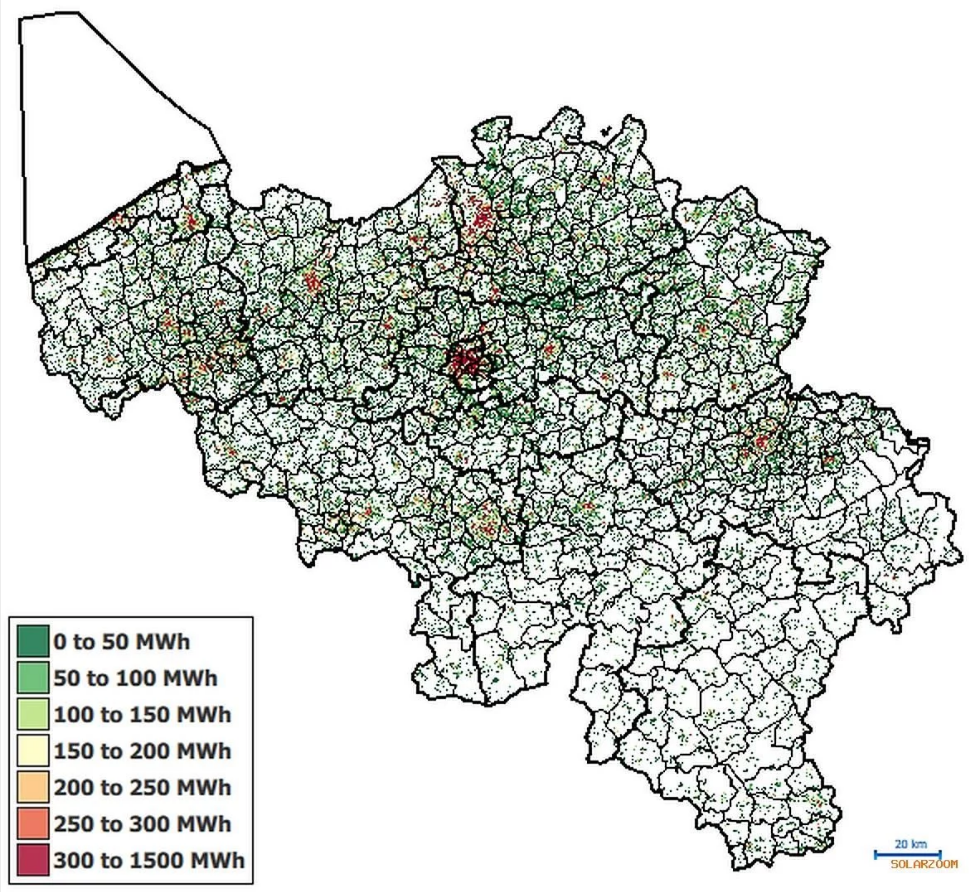
Release time:2022/1/4 14:59:01viewed:1359
Energyville is a joint venture between the University of Leuven, the Flanders Institute of Technology (Vito) , the Centre for Microelectronics Research (IMEC) and the Hasselt University, an assessment of the technological potential of rooftop solar and onshore wind in Belgium found that these two sources alone could generate a total of 118 GW of installed capacity. The largest portion -- 99.6 GW -- is made up of photovoltaic power, with half of the installed capacity coming from residential and commercial installations. The institute’s experts identified all sites suitable for both technologies and combined these geographic data with technical parameters and meteorological data for 2017. “The potential for additional installations reported in this study was calculated by assuming full coverage of 226wp/m2 pv modules (SPR-MAX3-400) in each building type’s available roof space in a specified direction and inclination,”the ENERGYVILLE experts noted, “In Belgium, the effectiveness of pv varies, with installations operating at full capacity between 930 and 1,060 hours and potential additional energy production of 99.3 TWh per year or more.” Flemish’s flanders is the region with the greatest potential for rooftop solar systems, with about 65 GW, followed by French speaking Valonne, with about 30 GW, and Brussels, Stolichna Oblast, with about 4.2 GW. By the end of 2020, Belgium had a cumulative installed capacity of more than 6 Gw, almost all of which came from residential and commercial PV systems, with only a few coming from established surface PV stations. On the other hand, the legislation in force in Belgium does not favour utility-scale solar power plants, the vast majority of which are no larger than 10kw.

Installed capacity (01/01/18) and technical potential of technologies in various regions of Belgium. The model takes into account the constraints of existing policies on the available space, and calculates the generation potential based on demand, grid capacity and flexibility. According to the study, commercial and industrial projects have the highest electricity generation potential in flanders and are concentrated in industrial areas close to roads and navigable waterways, such as the south-west of Flanders and along the axis of Sambourg, not In the city center. The institute made it clear that the results of the report did not include potential power generation from the addition of ground-based photovoltaic power stations and building integrated photovoltaic (BIPV) installations, indicating the technological potential for solar energy in the country, may Be greater than the value of the institute’s Analysis and assessment. “Unfortunately, there are no clear policy guidelines to prioritize the installation of PV systems over other forms of land use (water, agriculture or industrial parks) , nor are there clear policies to guide the reliable assessment of the technological potential of BIPV spaces, so they were not evaluated in this study,”the institute’s experts concluded.
Copyright © 2008-2016 江门市析客网络科技有限公司 All Rights Reserved. 浙ICP备2021038150号 Technical support:xike
